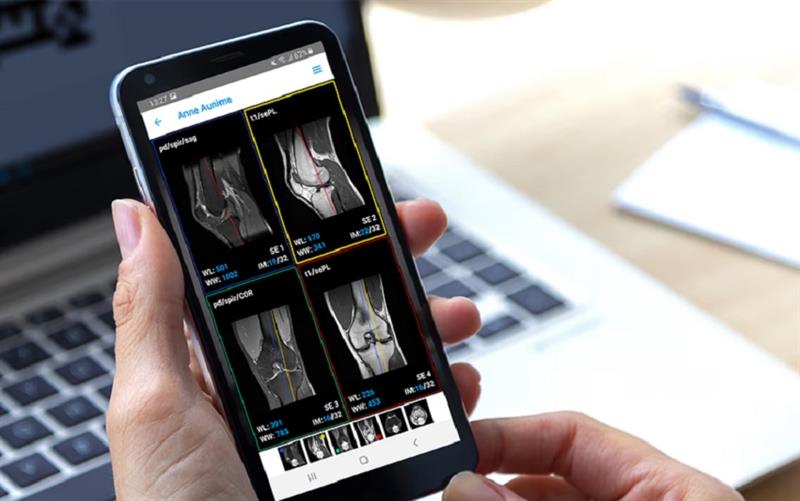
Mobile medical software is transforming healthcare by empowering both patients and providers with the tools needed to deliver care on the go. From real-time access to patient information and streamlined workflows to remote monitoring and telemedicine, these applications are making healthcare more efficient, accessible, and patient-centered. As technology continues to evolve, the role of mobile medical software in healthcare will only expand, paving the way for a more connected and responsive healthcare system.
For healthcare providers, embracing mobile medical software isn’t just an option—it’s becoming a necessity in delivering high-quality, timely, and accessible care. For patients, it means better health management, improved communication, and more control over their healthcare journey. In the age of digital transformation, mobile medical software is truly empowering healthcare on the go.
In today's fast-paced world, mobility and convenience are essential in every aspect of life, including healthcare. Mobile medical software is revolutionizing the healthcare landscape by offering real-time access to patient data, improving the efficiency of healthcare providers, and enhancing the quality of care for patients. As smartphones and tablets become an integral part of everyday life, mobile medical applications are transforming how healthcare is delivered. In this blog, we’ll explore how mobile medical software is empowering healthcare professionals and patients alike.
1. Real-Time Access to Patient Information
One of the most significant benefits of mobile medical software is its ability to provide healthcare professionals with real-time access to critical patient information. Whether they are in a clinic, at a patient's home, or even traveling, healthcare providers can quickly pull up a patient's medical history, lab results, and medication lists. This immediate access enables them to make more informed decisions, reducing the risk of errors and enhancing the overall quality of care.
2. Improved Patient-Doctor Communication
Mobile medical software also plays a crucial role in fostering better communication between patients and healthcare providers. Many platforms feature secure messaging systems that allow patients to reach out to their doctors with questions, schedule appointments, or request prescription refills without needing an office visit. This level of accessibility strengthens the patient-doctor relationship, leading to improved patient satisfaction and better health outcomes.
3. Streamlined Workflow for Healthcare Providers
Efficiency is key in healthcare, and mobile medical software streamlines workflow by digitizing and automating several administrative tasks. From scheduling appointments to processing payments and managing patient records, mobile applications can significantly reduce the burden on healthcare providers. As a result, doctors and nurses can spend more time focusing on patient care rather than paperwork.
4. Remote Patient Monitoring
Mobile medical software has made it easier than ever to monitor patients remotely. Through integrated wearable devices and mobile applications, healthcare providers can track vital signs such as heart rate, blood pressure, and glucose levels in real time. This is especially beneficial for patients with chronic conditions, as continuous monitoring allows for timely interventions before complications arise. It also reduces the need for frequent in-person visits, saving both time and money for patients and providers.
5. Telemedicine Capabilities
Telemedicine is another game-changer brought to life by mobile medical software. With the help of video conferencing tools integrated into mobile platforms, healthcare providers can conduct virtual consultations with patients. This is particularly beneficial for patients in rural or underserved areas who may not have easy access to healthcare facilities. Telemedicine also reduces wait times and eliminates the need for unnecessary travel, providing convenience without sacrificing the quality of care.
6. Enhanced Data Security
Data security is a top priority in healthcare, and mobile medical software ensures that sensitive patient information is protected. Most platforms are equipped with high-level encryption and authentication protocols to safeguard data from unauthorized access. This level of security ensures compliance with healthcare regulations, such as the Health Insurance Portability and Accountability Act (HIPAA), giving patients and providers peace of mind when using these applications.
7. Improved Prescription Management
Managing prescriptions can be a challenge for both patients and healthcare providers, but mobile medical software makes this process much easier. With the ability to digitally manage prescriptions, doctors can send prescriptions directly to pharmacies, reducing the risk of errors. Patients can also set reminders through apps to take their medications on time, improving adherence and health outcomes.
8. Patient Engagement and Self-Management
Mobile medical software encourages patients to take a more active role in managing their health. Through patient portals and mobile applications, individuals can access their medical records, track their health metrics, and even participate in wellness programs. This increased engagement promotes better self-management, which is particularly important for chronic disease management. When patients are empowered with the tools to manage their health, they are more likely to follow treatment plans and make informed decisions.
9. Data Analytics for Predictive Insights
The integration of advanced data analytics within mobile medical software offers predictive insights that can help healthcare providers anticipate potential health issues. By analyzing patient data trends, such as changes in vital signs or medication adherence, the software can alert healthcare providers to potential risks before they escalate into serious conditions. This proactive approach to healthcare can prevent complications and improve patient outcomes.
10. Increased Accessibility and Affordability
Mobile medical software is making healthcare more accessible and affordable for patients. By reducing the need for in-person consultations and improving care efficiency, these platforms lower the overall cost of care. For many patients, especially those in underserved areas, the ability to access healthcare services via their mobile devices eliminates geographical and financial barriers, ensuring that more people can receive the care they need.